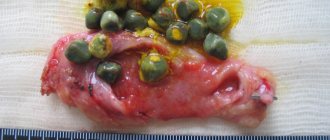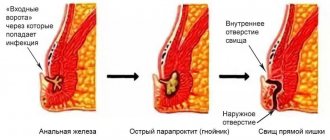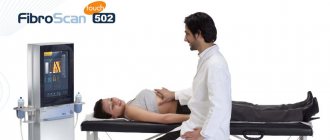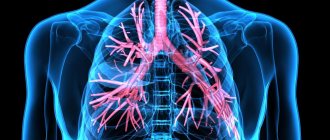Parasites
are organisms that use other living beings as a source of food or habitat, causing them harm. The word “parasite” is translated from Greek as parasite.
- Worms-Helminths
- Symptoms
- Diagnostics
- Treatment
- Our doctors
- Make an appointment
- Questions and answers
Parasites are very diverse. They can be microscopic or can reach several meters in length. Their habitats in the body are also different: intestines, liver, muscles, sometimes even the brain. In fact, parasites can live anywhere. If the parasite is worms (worms), the disease is usually called helminthiasis.
Uninvited “guests” of our body are dangerous for two reasons: they can both mechanically destroy organs and poison them with the products of their vital activity.
It is noteworthy that infection with parasites rarely leads to death. This is not surprising, because the parasite itself will die along with the host. Therefore, people can spend years being treated for a variety of ailments, attribute fatigue to a lack of vitamins, and allergies to poor ecology and heredity. But the cause of these problems may be a parasite that poisons the body. Not a single person in the world, regardless of his age and social status, can be protected from parasites entering his body.
Symptoms of helminth infection
Complaints from people who have parasites in their bodies can be very diverse. The following symptoms of helminth parasites are possible:
- indigestion, increased gas formation, unstable stools, frequent abdominal pain, itching in the anus;
- pain and inflammation in the joints;
- skin rashes, skin itching:
- weakness, fatigue, hair loss, low hemoglobin levels;
- mental depression, irritability, anxiety, grinding teeth and drooling during sleep, insomnia and other sleep disorders;
- feeling unwell for no apparent reason or diagnosis.
Increased sensitivity to allergens can also be the result of the activity of worms. It is believed that more than half of all allergic reactions and even cases of bronchial asthma may be the result of existing or previously experienced helminthiasis.
Symptoms of helminthiasis
Signs of parasite infestation vary depending on the stage of the disease. The most common symptoms that appear are:
- weight loss, exhaustion;
- pale skin;
- itching in the anus.
The symptoms are similar to other pathologies, so the patient may use the wrong treatment methods. Symptoms may vary depending on the area of the body affected. For example, when the liver is damaged, the skin turns yellow.
Gastrointestinal dysfunction
When pathogens penetrate the digestive tract, the following symptoms develop:
- violation of the formation of feces (constipation, diarrhea);
- itching in the anus;
- dyspeptic disorders - nausea, vomiting, abdominal pain, heartburn;
- colic in the intestines;
- flatulence accompanied by bloating;
- periodic change in body weight from greater to lesser degrees.
In the early stages, symptoms are almost invisible. The more the worms damage internal organs, the more actively the symptoms develop. Some parasites are capable of secreting waste products that are foreign to the body. This leads to severe intoxication and diarrhea. Large worms spread throughout the intestines, preventing the passage of feces. This causes constipation.
Due to the release of waste products of worms, a person is exposed to severe intoxication. This is why weakness, malaise, and dyspeptic disorders develop.
Immune suppression
When a person eats food, his body receives nutrients that are distributed throughout the tissues. Helminths eat them, so the patient develops the following abnormalities:
- hypovitaminosis;
- metabolic disease;
- suppression of the immune system.
A person often begins to get sick with viral, bacterial, and fungal diseases. Even with the use of multivitamin preparations, hypovitaminosis will not be eliminated until anthelmintic treatment is completed.
Neurological disorders
Some types of helminths are capable of damaging peripheral tissues of the nervous system and crossing the blood-brain barrier. The products of their intoxication have these properties. Damage to the nervous system causes the following symptoms:
- constant forgetfulness, poor memory;
- headache up to migraine;
- dizziness;
- stress, neurosis, depression;
- increased fatigue.
The patient's behavior changes. He comes into conflict with people around him and forgets his acquaintances. Gradually, the symptoms increase and the body temperature rises to more than 39 degrees.
Constant hypovitaminosis leads to chronic fatigue syndrome. The level of red blood cells gradually decreases, causing anemia. The person becomes irritable and aggressive.
Respiratory disorders
Even in the initial stages, damage to the deepest parts of the respiratory tract can develop. The following pathologies develop:
- tracheitis, bronchitis;
- emphysema, bronchial asthma, pneumonia.
Even frequent rhinitis and pharyngitis can be a sign of helminthic infestation.
Skin problems
In order for the epidermis to develop normally, a sufficient amount of vitamins, trace elements, and minerals is required. Worm infestation leads to hypovitaminosis, so the quality of the skin suffers. The following deviations appear:
- pimples, acne, rash;
- itching, peeling, redness of the epidermis;
- detachment of the nail plate.
Even the most severe skin pathologies can develop:
- urticaria, dermatitis;
- papilloma, seborrhea;
- allergic reaction.
The doctor and the patient may not immediately understand why medications do not help with these pathologies. The quality of the skin deteriorates significantly, it becomes pale, wrinkles appear. Turgor, that is, surface tension, decreases.
Types of parasites
There are a great many organisms that live off of us. Currently, more than 200 species of parasites have been identified in humans. Here are the most common ones.
Toxoplasma
Affects the nervous system, liver, spleen, skeletal muscles and myocardium. Most dangerous for pregnant women. If the expectant mother gets sick with toxoplasmosis, the child will most likely be born with deformities.
Amoeba
Most often it causes damage to the colon with prolonged diarrhea. According to WHO, 10% of the world's population suffers from amebiasis.
Alveococcus
Grows into the tissue of the host organ, like a malignant tumor. The liver and brain are often affected, where the size of the formation caused by the parasite can reach 15 cm in diameter.
Schistosoma
Lives and multiplies in the blood of a sick person. Can pass through the walls of blood vessels, entering the bladder and intestines. The embryos located inside the eggs secrete a specific poison that destroys tissue and poisons the body.
Pinworms
Most often found in children, they inhabit the lower parts of the small intestine and part of the large intestine. If pinworms clog the appendix, it can cause an attack of appendicitis. Digestion and absorption of food are disrupted, and the level of important microelements in the blood of patients is significantly reduced.
Roundworms
Ascaris larvae in the human body can lead to serious disruptions in the functioning of the immune system. At an early stage of the disease, there may be an increase in body temperature, a dry cough, a rash, and sometimes an enlarged liver. Having settled in the intestines, roundworms secrete poisons that are strong allergens.
Blood tests indicating the presence of parasites
In the blood, it is possible to detect specific antibodies of various classes (IgG, IgM, IgA, IgE) produced by the human body after contact with the parasite, for example, antibodies against Giardia lamblia of the IgM and IgG classes, antibodies against tapeworm of the IgM and IgG classes. But it must be borne in mind that in the first months of infection, antibodies may not yet be detected.
Serological tests are important for retrospective confirmation of infection, for example during stays in tropical countries. It should also be remembered that elevated antibody titers may persist for many years despite the absence of an active disease process.
Important diagnostics
Modern diagnostic methods make it possible to identify almost all types of parasites. However, cases of infection often remain unsolved. Usually patients do not even think that they could be attacked by worms. After all, weakness, depression, loss of appetite, headaches, allergic reactions can occur with a variety of diseases.
As a result, people are not given the necessary examination, and the true cause of the illness is not revealed. And the person continues to visit doctors and take useless medications.
Therefore, diagnosing parasitic infections is very important. Especially in cases where the diagnosis is not fully understood, treatment does not help the person well, and complaints remain.
Prevention of parasitic infestations
In order not to “pick up” exo- and endoparasites, you need to:
- wash your hands, vegetables and fruits thoroughly before eating;
- remove dirt under nails;
- do not use other people’s combs, shoes and household items;
- do not walk on the floor in public places with bare feet, and wear a cap when swimming in the pool;
- do not buy food at “spontaneous” markets and do not eat in dubious catering establishments;
- boil or fry meat or fish;
- monitor the health of pets by carrying out deworming on time;
- use insect repellent when traveling;
- Having arrived from an exotic country, undergo a full examination and take tests.
Parasites quickly infect people, so when they are detected, people living with the patient are checked and, if necessary, they are treated too.
At Best Clinic you can get tested for the presence of worms and get advice from a general practitioner. Call us!
Treatment of helminths - individually
INITIAL CONSULTATION
from RUB 2,350
There are no universal methods of getting rid of parasites. The approach to treatment is always individual. Treatment with medications or other methods is possible. Sometimes even surgery is required. The final tactics for getting rid of parasites are prescribed by the doctor after a thorough examination.
Currently, due to serious changes in the environment, the widespread use of antibiotics and other drugs, and often unhealthy diets, the clinical picture of helminthiasis has changed. According to ART data, every second or third child is diagnosed with parasitic problems: giardiasis, ascariasis, hookworm, toxoplasmosis, enterobiasis, etc. Due to the expanded borders for travel to exotic and warm countries, helminthiases are often detected, which were previously observed only in certain regions - schistosomiasis, opisthorchiasis, etc. The presence of helminths in the body significantly reduces immunity to viral diseases. This is especially noticeable in children examined using the ART method, who are often and long-term ill, and is also often the cause of long-term low-grade fever.
Several methods are used to diagnose helminthiases:
- Microscopic (detection of parasites in environments).
- Enzyme immunoassay ELISA (diagnosis of blood testing for antibodies).
- The VRT method is the identification of parasites by frequency characteristics.
The ART method has a number of advantages compared to other methods:
- Non-invasive, i.e. without blood sampling, which is important especially in pediatrics.
- Allows you to determine the parasite in different stages (eggs, larvae, adults), as well as the presence of parasites in organs. Unfortunately, stool analysis for worm eggs is not always reliable due to the fact that parasites in the body undergo different stages of development, so in order to catch them, you need to take stool tests multiple times.
- Compared to the immunological method, ART diagnostics is a cheaper method.
- Confidence > 80%.
- ART allows both to identify helminthiasis and to determine the most effective method of treatment: frequency therapy - exogenous and endogenous BRT, herbal medicine and chemotherapy.
- Homeopathic treatment in combination with anthelmintic therapy can significantly strengthen the body’s immune system, normalize the functioning of the gastrointestinal tract, nervous system and other systems.
- According to ART diagnostics, helminthiases are often found in patients with diseases of the digestive system. As well as diseases associated with metabolic and acid-base balance disorders in the body (diabetes mellitus, obesity, ulcerative colitis, intestinal diverticulosis, hepatitis, cholecystitis, pancreatitis, etc.)
After deworming and cleansing the body, the course of the underlying disease usually improves, and clinical remission is often observed. In such cases, the ART method also allows you to choose the right nutrition.
What tests should I take?
If the doctor suspects the penetration of parasites, it is recommended to undergo a series of tests. It is important to check which parameters of the body they violated, where they caused necrosis and changes in functions. Test data is shown in the table.
| Analysis name | Target | Values in the presence of parasites |
| General blood analysis | Identification of the state of the hematopoietic and immune system | ESR and the level of leukocytes, especially eosinophils, increase |
| Linked immunosorbent assay | Determination of immunoglobulins type A, M, G, secreted for pathogen penetration | The exact amount of immunoglobulins is determined. IgG indicates chronic infection. IgM appears in the acute phase |
| Hemoscanning | Detection of larvae in the blood | Only with a serious parasitic infection are larvae found in the blood |
| PCR | Detection of the slightest concentration of parasite particles | Detect the presence and volume of the pathogen in a given level of biological fluid |
In addition to enzyme immunoassay, immunofluorescence and hemagglutination reactions can be performed. But the first test is the most accurate and reliable. It helps to identify leishmaniasis, giardiasis, ascariasis, opisthorchiasis and other infections.
Clinical cases
Patient K., 35 years old, complained of frequent painful urination that appeared after the summer holidays. At the end of urination, blood was sometimes released. The duration of the disease is 1.5 months. She was treated with antibiotics and other drugs with a diagnosis of cystitis. The treatment brought temporary relief, and then the complaints intensified again. According to ART diagnostics, schistosoma haematobium (schistosoma) was identified. After a course of BRT therapy and homeopathic medicine for two weeks, my health improved significantly. At a follow-up examination after 1 month, schistosoma is not tested.
A 6-year-old child was referred due to a herpes rash on the face. ART testing revealed ascariasis. After homeopathic treatment, BRT therapy, herbal medicine, ascariasis is not tested. Herpes did not recur.
Patient B., 45 years old, applied due to an existing polyvalent allergy to foods, medications, and household allergens, which manifested itself in urticaria and angioedema. Due to illness, she left her job. An examination using the ART method revealed: toxoplasmosis, ascariasis, fascioliasis. After a course of treatment for a year, my health improved significantly, I learned a new specialty, and got a job.
Laboratory tests to identify parasites - tests for worms
Stool examination.
The main laboratory test is examination of stool under a microscope, which allows the identification of cysts, eggs and larvae of parasites. It is very important to do this before starting treatment.
To assess the effectiveness of antiparasitic drugs, a stool sample should be collected 1-3 weeks after the end of therapy. It is recommended to collect the test material three times with an interval of 2-3 days for 10 days.
For patients returning from tropical countries, 4 samples are recommended (last test after challenge with cleaning products). This increases the chance of detecting infection because some forms appear cyclically in the stool.
Increasingly, stool testing is carried out using the Parasep SF system, which is a disposable equipment used for the initial preparation of the test material. This sample preparation allows for more thorough cleaning before microscopic examination, increases the efficiency of infection detection and reduces examination time.
However, it is impossible to detect pinworms using standard methods. They are diagnosed not by examining the feces, but by using sticky tape around the anus.
In addition to microscopic examination of stool, there are also enzyme immunoassays that can detect specific parasite antigens in the stool. They are most often used to confirm infection with parasites such as intestinal giardia, amoebiasis or cryptosporidium. These tests are less important than a basic microscopic examination of the stool; they complement the diagnosis.
Specific preparation
To obtain the most reliable data, you need to prepare for analysis. To clarify actions, consult a therapist or infectious disease specialist. It is recommended to comply with the following requirements from the attending physician in order to correctly take the test to identify parasites in the human body without receiving a false result:
- 7-10 days in advance, any medications other than vital drugs are discontinued;
- Before donating blood, it is prohibited to use antibiotics and antiparasitic drugs;
- 1-2 days in advance, stick to a diet, eliminate any fatty, spicy, fried, smoked, excessively salty foods and allergens (they can provoke an inflammatory reaction, making it difficult to detect an infection);
- come to the clinical facility on an empty stomach, the last meal is allowed 8 hours before the test;
- on the day of blood donation they do not smoke and come to the clinic in the morning.
To make the analysis more accurate, venous blood is taken. 5 ml is enough to detect a change. Disposable, sterile materials are used and sent immediately to the laboratory.
If the patient has questionable data, blood donation is repeated 7 days after the previous one.
There are cases of false negative results. Mostly they happen when preparation recommendations are not followed. More often, no signs of infection are found in the body, although the parasite has already entered it.
Decoding the received data
According to the degree of distribution, parasites are divided into intestinal and extraintestinal types. The degree of spread throughout the body depends on the phase of their reproduction cycle. Using analysis, the following data is isolated:
- presence or absence of a parasite;
- area of distribution of the parasite throughout the body (digestive tract, systemic blood flow);
- the volume of parasitic infection depending on the concentration of antibodies;
- stages of the pathological process (acute, chronic).
The enzyme immunoassay test is slightly different from other tests. It reveals the presence of parasites and the degree of immune response. The following decryption data is highlighted:
- IgM
- an indicator in the blood indicates the presence of parasites, manifests itself in the acute phase, immunoglobulins are detected on the 5th day, last for 2 months; - IgM
- a chronic process that occurs over several months or years; - IgA
- completion of the acute phase, beginning of the chronic phase, detected after 1 month from infection.
If all the requirements are met correctly, the analysis for the presence of parasites in the human body becomes 90% accurate. Only in 10% of cases do false positive and false negative results occur. For example, if a person has an inflammatory reaction for another reason (viral disease, immunodeficiency, hypersensitivity to an allergen).











